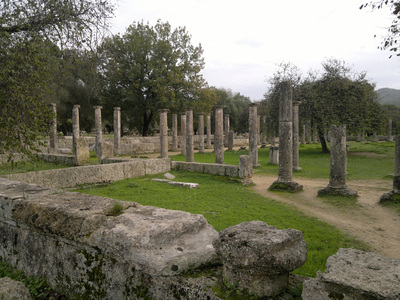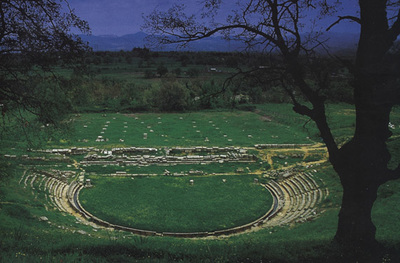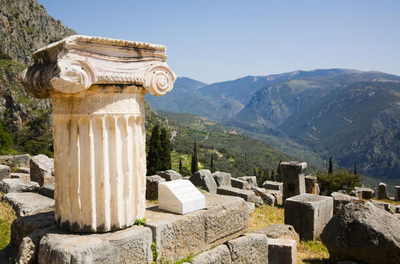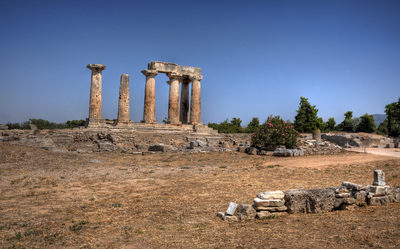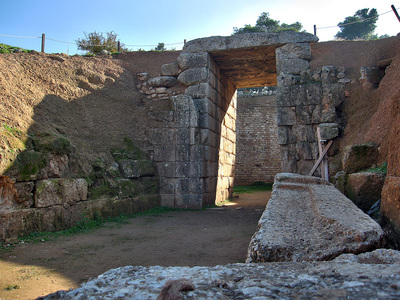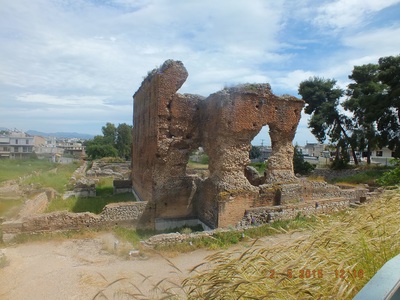The Peloponnese
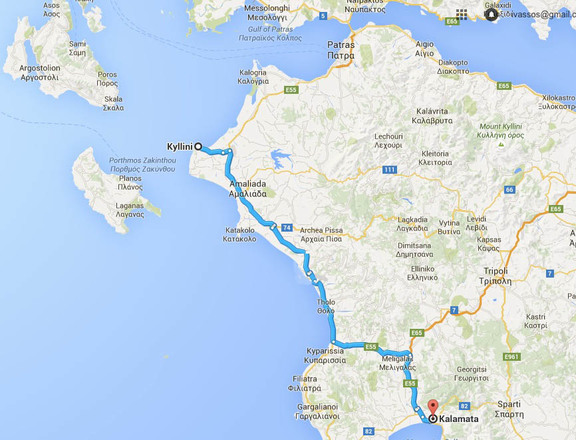
From Kefalonia we ferried again from Poros to Kylini and then drove south for three hours through the Peloponnese, the large southern peninsula of Greece. This area was known during the Middle Ages and Ottoman period as The Morea. Its geography is diverse: mountains in the central part, plains, gorges and valleys, citrus trees and vineyards, and cypress trees. Its beautiful beaches contribute to the tourism of Greece.
The Peloponnese has many antiquity sites including: Ancient Mycenae, Ancient Corinth, Olympia, Epidavros, Sparta, Mystras, Argos, and Megalopolis. The far southern mountain region, called the Mani, was one of the most remote areas of Greece until the late 20th century when Greek road projects made it more accessible.
Although this trip did not include visiting Antiquities and pre-Christian ruins, we became acutely aware of the influence of this culture on the development of Christian church art: frescos, icons, mosaics, architecture and the liturgical treasures of Byzantium. We saw, for example, how classical columns were incorporated into basilica Byzantine churches; similarly, exhibits in the Byzantine Museum illustrated how ancient mosaic floor and wall designs, household items, stone walls, etc. continued to evolve and be integrated into Byzantine liturgical design. Several of the churches were built on top of ancient sites and housed old mausoleums, baths, floor mosaics and continued to use and refine exterior atria designs. (Parallel phenomena occured in the Roman West).
Here are the Peloponnese places we did NOT visit on this trip!
The Peloponnese has many antiquity sites including: Ancient Mycenae, Ancient Corinth, Olympia, Epidavros, Sparta, Mystras, Argos, and Megalopolis. The far southern mountain region, called the Mani, was one of the most remote areas of Greece until the late 20th century when Greek road projects made it more accessible.
Although this trip did not include visiting Antiquities and pre-Christian ruins, we became acutely aware of the influence of this culture on the development of Christian church art: frescos, icons, mosaics, architecture and the liturgical treasures of Byzantium. We saw, for example, how classical columns were incorporated into basilica Byzantine churches; similarly, exhibits in the Byzantine Museum illustrated how ancient mosaic floor and wall designs, household items, stone walls, etc. continued to evolve and be integrated into Byzantine liturgical design. Several of the churches were built on top of ancient sites and housed old mausoleums, baths, floor mosaics and continued to use and refine exterior atria designs. (Parallel phenomena occured in the Roman West).
Here are the Peloponnese places we did NOT visit on this trip!
